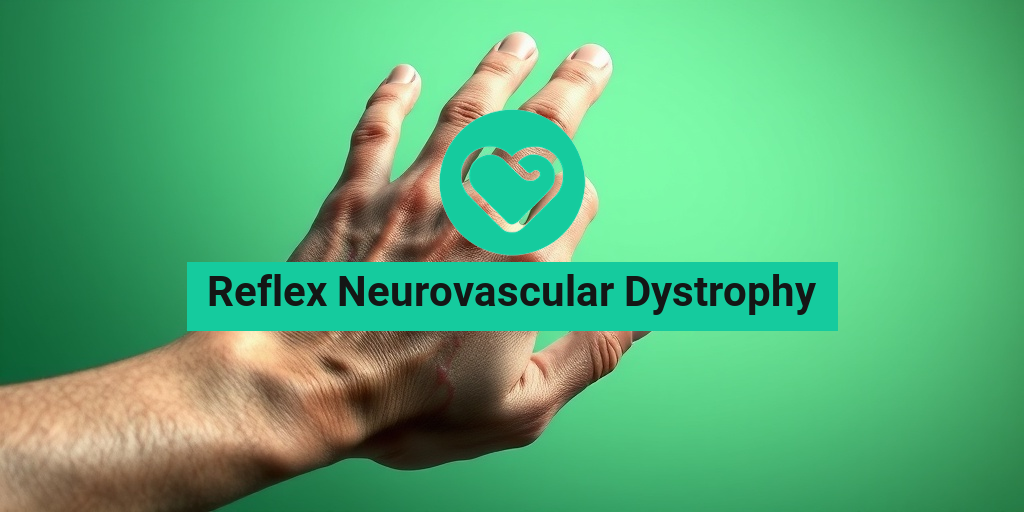What Is Kneecap Tracking Disorder?
Kneecap Tracking Disorder, also known as patellar tracking disorder, is a condition that affects the way the kneecap (patella) moves over the thigh bone (femur) during knee movement. This misalignment can lead to discomfort, pain, and even long-term damage if not addressed properly. The patella is designed to glide smoothly in a groove at the end of the femur, but various factors can disrupt this natural movement, causing the kneecap to shift out of its intended path.
Causes of Kneecap Tracking Disorder
Several factors can contribute to the development of kneecap tracking disorder, including:
- Muscle Imbalances: Weakness or tightness in the muscles surrounding the knee can lead to improper tracking.
- Structural Abnormalities: Some individuals may have anatomical differences, such as a shallow groove for the patella or misaligned bones.
- Overuse Injuries: Repetitive activities, especially those involving running or jumping, can strain the knee and lead to tracking issues.
- Previous Injuries: Past injuries to the knee, such as ligament tears or fractures, can affect the alignment of the kneecap.
Understanding the underlying causes is crucial for effective treatment and management of the condition. If you suspect you have this disorder, consulting a healthcare professional is essential for a proper diagnosis.
Symptoms of Kneecap Tracking Disorder
The symptoms of kneecap tracking disorder can vary from person to person, but some common signs include:
- Knee Pain: Pain around or behind the kneecap, especially during activities like climbing stairs, squatting, or sitting for long periods.
- Swelling: Inflammation around the knee joint may occur, leading to visible swelling.
- Clicking or Popping Sounds: You might hear or feel a clicking sensation when moving your knee, indicating that the patella is not tracking properly.
- Instability: A feeling of the knee giving way or being unstable during movement.
When to Seek Medical Attention
If you experience persistent knee pain or any of the symptoms mentioned above, it’s important to seek medical attention. Early diagnosis and intervention can prevent further complications and improve your quality of life. A healthcare provider may recommend a patellar tracking disorder test to assess the alignment and function of your kneecap.
Managing Symptoms
While it’s essential to consult a healthcare professional for a tailored treatment plan, there are some general strategies that can help manage the symptoms of kneecap tracking disorder:
- Physical Therapy: Engaging in targeted exercises can strengthen the muscles around the knee and improve patellar alignment.
- Bracing: A patellar tracking disorder brace can provide support and help stabilize the knee during activities.
- Rest and Ice: Taking breaks from activities that exacerbate the pain and applying ice can reduce inflammation.
- Medication: Over-the-counter pain relievers may help alleviate discomfort.
For more comprehensive information and resources on managing kneecap tracking disorder, consider visiting Yesil Health AI, where you can find evidence-based health answers tailored to your needs.
In conclusion, understanding kneecap tracking disorder is the first step toward effective management. By recognizing the symptoms and seeking appropriate treatment, you can take control of your knee health and improve your overall well-being. 🦵✨
![]()
Causes and Risk Factors
Kneecap Tracking Disorder, also known as patellar tracking disorder, occurs when the kneecap (patella) does not move smoothly along the groove at the end of the thigh bone (femur). Understanding the causes and risk factors associated with this condition is crucial for effective management and treatment. Here are some of the primary causes and risk factors:
1. Anatomical Factors
One of the most significant contributors to kneecap tracking disorder is the anatomy of the knee joint. Variations in the shape and alignment of the bones can lead to improper tracking. Key anatomical factors include:
- Q-angle: A larger Q-angle (the angle between the quadriceps muscle and the patellar tendon) can increase the risk of misalignment.
- Patellar position: Anomalies in the position of the patella, such as a high-riding patella (patella alta), can affect tracking.
- Hip and foot alignment: Issues with hip or foot alignment can also contribute to improper kneecap movement.
2. Muscle Imbalances
Muscle strength and flexibility play a vital role in maintaining proper kneecap alignment. Weakness or tightness in specific muscle groups can lead to tracking issues:
- Quadriceps weakness: Weak quadriceps muscles may fail to stabilize the patella during movement.
- Hamstring tightness: Tight hamstrings can pull the knee joint out of alignment.
- Hip muscle imbalances: Weakness in the hip abductors and external rotators can affect knee stability.
3. Overuse and Injury
Overuse injuries are common in athletes and individuals who engage in repetitive activities that place stress on the knee. Some contributing factors include:
- High-impact sports: Activities like running, jumping, and cycling can lead to wear and tear on the knee joint.
- Previous injuries: A history of knee injuries, such as ligament tears or fractures, can predispose individuals to tracking disorders.
4. Age and Gender
Age and gender can also influence the likelihood of developing patellar tracking disorder. Research indicates that:
- Age: Younger individuals, particularly adolescents, are more susceptible due to ongoing growth and development.
- Gender: Females are more likely to experience this condition, possibly due to anatomical differences and hormonal factors.
Diagnosis of Kneecap Tracking Disorder
Diagnosing kneecap tracking disorder involves a comprehensive evaluation by a healthcare professional. Early diagnosis is essential for effective treatment and management. Here’s how the diagnosis typically unfolds:
1. Medical History
The first step in diagnosing patellar tracking disorder is a thorough medical history. The healthcare provider will ask about:
- Symptoms: Patients should describe their symptoms, including pain, swelling, or a feeling of instability in the knee.
- Activity level: Information about physical activities and any previous injuries is crucial.
2. Physical Examination
A physical examination is essential for assessing knee function and alignment. The healthcare provider may:
- Check for swelling: Swelling around the knee can indicate inflammation.
- Assess range of motion: Limited range of motion may suggest tracking issues.
- Perform specific tests: Tests like the patellar apprehension test can help determine if the patella is tracking correctly.
3. Imaging Studies
In some cases, imaging studies may be necessary to confirm the diagnosis and rule out other conditions. Common imaging techniques include:
- X-rays: X-rays can reveal bone alignment and any structural abnormalities.
- MRI: An MRI provides detailed images of soft tissues, including cartilage and ligaments, helping to assess any damage.
By understanding the causes and risk factors of kneecap tracking disorder and following a thorough diagnostic process, individuals can take proactive steps toward effective treatment and recovery. 🦵💪
![]()
Treatment Options Available
Kneecap Tracking Disorder, also known as patellar tracking disorder, can be a frustrating condition that affects your mobility and overall quality of life. Fortunately, there are several treatment options available to help manage symptoms and improve knee function. Understanding these options can empower you to make informed decisions about your health.
Non-Surgical Treatments
Many individuals with patellar tracking disorder find relief through non-surgical treatments. These options are often the first line of defense and can be quite effective:
- Physical Therapy: A tailored physical therapy program can help strengthen the muscles around the knee, improve flexibility, and correct any biomechanical issues contributing to the disorder.
- Bracing: A patellar tracking disorder brace can provide support and stability to the knee, helping to keep the kneecap in its proper position during movement.
- Activity Modification: Adjusting your activities to avoid movements that exacerbate symptoms can be crucial. This may include reducing high-impact sports or activities that involve deep knee bending.
- Medications: Over-the-counter pain relievers, such as ibuprofen or acetaminophen, can help manage pain and inflammation associated with the disorder.
Surgical Options
If non-surgical treatments do not provide sufficient relief, surgical options may be considered. These procedures aim to correct the underlying issues causing the kneecap tracking disorder. Some common surgical interventions include:
- Realignment Surgery: This procedure involves repositioning the kneecap to ensure it tracks properly within the femoral groove.
- Arthroscopy: A minimally invasive procedure that allows surgeons to visualize and treat issues within the knee joint, such as cartilage damage or loose bodies.
- Osteotomy: In some cases, the alignment of the bones may need to be adjusted to improve the tracking of the kneecap.
It’s essential to consult with a healthcare professional to determine the most appropriate treatment plan based on your specific condition and lifestyle. 🩺
Physical Therapy for Recovery
Physical therapy plays a pivotal role in the recovery process for individuals with kneecap tracking disorder. A skilled physical therapist can design a personalized rehabilitation program that addresses your unique needs and goals.
Goals of Physical Therapy
The primary goals of physical therapy for patellar tracking disorder include:
- Strengthening Muscles: Targeting the quadriceps, hamstrings, and hip muscles can help stabilize the knee and improve tracking.
- Improving Flexibility: Stretching exercises can enhance the flexibility of the muscles and tendons around the knee, reducing tension and discomfort.
- Enhancing Balance and Coordination: Balance training can help improve proprioception, which is crucial for proper knee function during activities.
Common Physical Therapy Exercises
Here are some effective exercises that may be included in your physical therapy regimen:
- Quadriceps Sets: Sit with your leg straight and tighten your thigh muscle, holding for a few seconds before relaxing. Repeat several times.
- Straight Leg Raises: Lie on your back with one leg bent and the other straight. Raise the straight leg to the height of the bent knee, then lower it slowly.
- Wall Sits: Stand with your back against a wall and slide down into a sitting position, holding for 20-30 seconds to strengthen the quadriceps.
- Hip Abduction: Lie on your side and lift the top leg straight up, keeping it aligned with your body. This exercise strengthens the hip muscles, which support the knee.
Incorporating these exercises into your routine can significantly aid in recovery and help manage the symptoms of patellar tracking disorder. Always consult with your physical therapist before starting any new exercise program to ensure it’s safe and appropriate for your condition. 💪
![]()
Preventing Kneecap Tracking Issues
Kneecap tracking disorder, also known as patellar tracking disorder, occurs when the kneecap (patella) does not move smoothly along the groove at the end of the thigh bone (femur). This can lead to pain, discomfort, and even long-term joint issues. Fortunately, there are several strategies you can implement to help prevent these issues from arising.
Understanding the Causes
Before diving into prevention, it’s essential to understand what contributes to kneecap tracking issues. Some common causes include:
- Muscle Imbalances: Weakness in the muscles surrounding the knee can lead to improper tracking.
- Overuse: Repetitive activities, especially those involving jumping or running, can strain the knee.
- Injury: Previous injuries to the knee can alter its mechanics.
- Structural Abnormalities: Some individuals may have anatomical differences that predispose them to tracking issues.
Strengthening Exercises
One of the most effective ways to prevent kneecap tracking disorder is through targeted exercises that strengthen the muscles around the knee. Here are a few exercises to consider:
- Quadriceps Strengthening: Exercises like squats and leg presses can help build strength in the quadriceps, which plays a crucial role in stabilizing the kneecap.
- Hamstring Exercises: Strong hamstrings can help balance the forces acting on the knee. Consider incorporating deadlifts or hamstring curls into your routine.
- Hip Strengthening: Exercises such as side leg raises and clamshells can strengthen the hip muscles, which are vital for proper knee alignment.
Flexibility and Stretching
In addition to strengthening, maintaining flexibility in the muscles surrounding the knee is crucial. Regular stretching can help prevent tightness that may contribute to tracking issues. Focus on:
- Quadriceps Stretch: Stand on one leg and pull your other foot towards your glutes to stretch the front of your thigh.
- Hamstring Stretch: Sit on the ground with one leg extended and reach towards your toes to stretch the back of your thigh.
- Calf Stretch: Stand facing a wall, place one foot behind the other, and lean forward to stretch the calf muscles.
Proper Footwear and Surface
Wearing the right shoes can significantly impact knee health. Ensure that your footwear provides adequate support and cushioning. Additionally, be mindful of the surfaces you exercise on; softer surfaces can reduce the impact on your knees.
Listening to Your Body
Finally, one of the best prevention strategies is to listen to your body. If you experience pain or discomfort in your knees, it’s essential to take a break and assess your activities. Ignoring pain can lead to more severe issues down the line.
Living with Kneecap Tracking Disorder
For those diagnosed with kneecap tracking disorder, managing the condition is key to maintaining an active lifestyle. While it can be challenging, understanding how to cope with the disorder can lead to improved quality of life.
Recognizing Symptoms
Common symptoms of patellar tracking disorder include:
- Knee Pain: Often felt around the kneecap, especially during activities like climbing stairs or squatting.
- Swelling: Inflammation around the knee joint may occur.
- Clicking or Popping Sounds: You might hear or feel a clicking sensation when moving the knee.
Effective Treatment Options
Managing kneecap tracking disorder often involves a combination of treatments:
- Physical Therapy: A physical therapist can design a personalized exercise program to strengthen the knee and improve tracking.
- Bracing: A patellar tracking disorder brace can provide support and help keep the kneecap in place during activities.
- Medication: Over-the-counter pain relievers can help manage discomfort and inflammation.
- Surgery: In severe cases, surgical options may be considered to correct alignment issues.
Adapting Your Lifestyle
Living with kneecap tracking disorder may require some adjustments to your daily routine. Here are a few tips:
- Modify Activities: Avoid high-impact activities that exacerbate knee pain, such as running on hard surfaces.
- Incorporate Low-Impact Exercises: Swimming, cycling, and yoga can provide excellent alternatives that are easier on the knees.
- Maintain a Healthy Weight: Reducing excess weight can alleviate pressure on the knees, improving overall joint health.
Seeking Support
Connecting with others who have similar experiences can be incredibly beneficial. Online forums and support groups, such as those found on Reddit, can provide a platform for sharing tips, experiences, and encouragement. Remember, you are not alone in this journey! 💪
![]()
Frequently Asked Questions about Kneecap Tracking Disorder
What is Kneecap Tracking Disorder?
Kneecap Tracking Disorder, also known as patellar tracking disorder, occurs when the kneecap (patella) does not move smoothly along the groove of the thigh bone (femur) during knee movement. This can lead to pain, instability, and difficulty in performing daily activities.
What are the symptoms of Patellar Tracking Disorder?
- Knee pain: Often felt around or behind the kneecap.
- Swelling: Inflammation around the knee joint.
- Clicking or popping sounds: When bending or straightening the knee.
- Instability: A feeling that the knee may give way.
How is Patellar Tracking Disorder diagnosed?
Diagnosis typically involves a physical examination by a healthcare professional, who may assess knee movement and stability. Imaging tests, such as X-rays or MRIs, may also be used to evaluate the alignment of the kneecap and surrounding structures.
What are the treatment options for Patellar Tracking Disorder?
- Physical therapy: Exercises to strengthen the muscles around the knee and improve flexibility.
- Bracing: A patellar tracking disorder brace can help stabilize the kneecap.
- Medications: Anti-inflammatory drugs to reduce pain and swelling.
- Surgery: In severe cases, surgical intervention may be necessary to realign the kneecap.
Are there exercises for Patellar Tracking Disorder?
Yes! Specific exercises can help strengthen the muscles around the knee and improve patellar tracking. These may include:
- Quadriceps strengthening: Exercises like straight leg raises.
- Hamstring stretches: To improve flexibility.
- Hip strengthening: Exercises targeting the hip muscles to support knee alignment.
Can Patellar Tracking Disorder be prevented?
While not all cases can be prevented, maintaining a healthy weight, engaging in regular exercise, and ensuring proper technique during physical activities can help reduce the risk of developing kneecap tracking disorder.
Where can I find support for Patellar Tracking Disorder?
Online communities, such as forums and social media groups, can provide support and shared experiences. Websites dedicated to knee health may also offer resources and information. Additionally, consulting with a healthcare professional can provide personalized guidance and support.
Is surgery always necessary for Patellar Tracking Disorder?
No, surgery is not always necessary. Many individuals find relief through conservative treatments such as physical therapy and bracing. However, if these methods do not alleviate symptoms, surgical options may be considered.
What should I do if I suspect I have Kneecap Tracking Disorder?
If you experience symptoms associated with kneecap tracking disorder, it is important to consult a healthcare professional for an accurate diagnosis and appropriate treatment plan. Early intervention can lead to better outcomes and prevent further complications.



